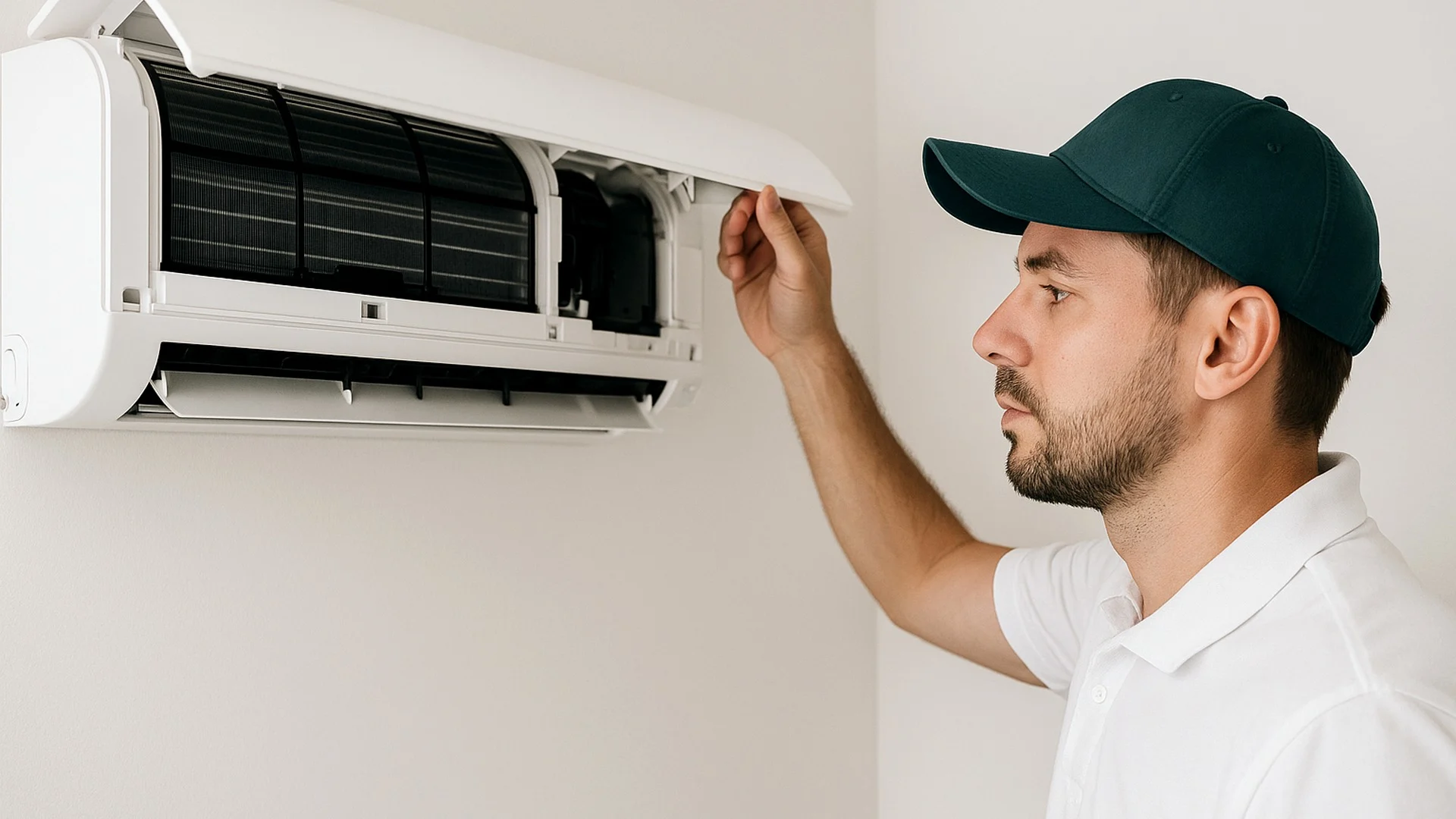AC repair and maintenance keeps your cooling system efficient, safe, and reliable. This guide explains what professional servicing includes, the signs your unit needs attention, and how routine care prevents breakdowns while lowering electricity costs.
Why AC Maintenance Matters
Every AC system collects dust, loses lubricant, and experiences wear over time. Without care, it runs longer to produce the same temperature, driving up bills and putting parts under stress. Routine maintenance restores clean airflow, resets optimal pressures, and catches small faults before they become expensive failures.
- Efficiency: Clean filters, coils, and fans mean less load and faster cooling.
- Reliability: Technicians check capacitors, contactors, drains, and sensors.
- Air quality: Sanitized components reduce dust and odors.
Signs You Need AC Repair
- Warm air or uneven cooling
- Ice on pipes or indoor unit
- Unusual noises: buzzing, rattling, or squealing
- Water leaks or blocked drain
- Short cycling or frequent breaker trips
What a Professional Service Includes
Standard tune-up checklist
- Filter inspection and replacement as needed
- Coil cleaning for indoor evaporator and outdoor condenser
- Fan and blower check, belt tension, and lubrication
- Refrigerant pressure test and leak scan
- Electrical safety check: terminals, capacitors, contactors
- Thermostat calibration and system test
- Drain line flush and pan sanitization
When repair is needed
Common fixes include capacitor replacement, contactor swap, leak repair and recharge, fan motor replacement, and PCB diagnostics.
How Often Should You Service an AC?
Most homes benefit from a full service at least once per year before peak season. Heavy usage, dusty environments, or pets may require twice-yearly visits. Filters typically need monthly to quarterly replacement depending on type.
Cost Factors and Saving Tips
- System size and accessibility
- Part replacements vs. tune-up only
- Age of the system and previous maintenance
- Bundle discounts when combining coil cleaning or duct cleaning
You can save by scheduling preventive service, using washable filters, and keeping outdoor units clear of plants and debris.
FAQs
How long does a standard AC service take?
Typically 45–90 minutes for a split system depending on coil condition and tests.
Do you top up gas on every visit?
Only if pressures or visual checks indicate a leak; topping up without fixing leaks is not recommended.
Can maintenance fix bad smells?
Yes. Cleaning coils, trays, and drains, followed by sanitizer, usually removes odors.
When is replacement more sensible than repair?
If the compressor is failing or the system is very old with frequent faults, a new unit may be more economical.
Conclusion
AC repair and maintenance protect comfort, lower energy use, and extend system life. Book preventive service before peak heat to avoid urgent breakdowns and enjoy steady, clean cooling.

